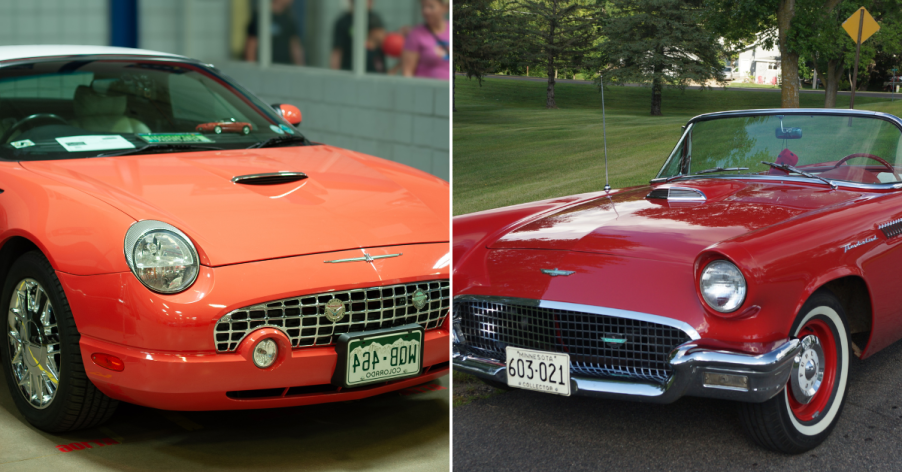
15 Discontinued Cars Whose Reboots Failed To Deliver

The automobile industry is no stranger to nostalgia. It often attempts to refresh beloved classics in hopes of rekindling past glory. However, not all of these remakes manage to capture the magic of what once was. Here are 15 cars that struggled to succeed when reintroduced to the modern market.
Pontiac GTO

Originally produced from 1963 to 1974, the Pontiac GTO often gets the credit for starting the muscle car buzz. It was revived in 2004 but did not resonate with fans due to its high price and styling preference that defined the original. Ultimately, it was discontinued in 2006 after just two years of production.
Dodge Dart

First produced in 1960, the Dodge Dart gained a reputation as a reliable compact car. Chrysler re-produced it in 2012, aiming to attract modern buyers with its sleek design, but despite initial excitement, the comeback fell flat. USA Today described it as “the wrong car, at the wrong time, from the wrong brand…”
Maybach 57

The Maybach brand was remade in 2000 with the introduction of the 57 model, featuring a V12 engine. Daimler-Chrysler had high expectations for the luxury car, projecting annual global sales of at least 2,000 units. However, over the course of a decade, Maybach managed to sell barely three thousand vehicles in total.
Ford Thunderbird

The Ford Thunderbird originally debuted in 1955 and became a symbol of American luxury cars until its production halted in 1977. Ford attempted a comeback in 2002, but the new model didn’t perform as expected, with sales significantly regressing after its first model year. Ford ceased production again in 2005.
Chevrolet Nova

Introduced in 1962, the Chevrolet Nova quickly became popular for its versatility and affordability. When General Motors revived it in 1985 as a subcompact on the Corolla platform, the car did not live up to its predecessor. Criticized for its lack of character, the Nova’s production ended in 1988, marking an unsuccessful return.
Mercury Cougar

1999 Mercury attempted to revive the Cougar as a front-wheel-drive sports coupe aimed at younger drivers. Unfortunately, its departure from the classic rear-wheel-drive muscle car design and dull performance did not capture the essence of the original models, leading to poor sales figures. The 2002 discontinuation marked the end of its unsuccessful comeback.
Plymouth Prowler (1997)

First revealed as a concept car in 1993, the Plymouth Prowler turned heads but wasn’t produced immediately. Plymouth brought it to market in 1997 with a striking retro design. Although it was visually stunning, the Prowler was criticized for its not-so-strong V6 engine, which struggled with the car’s heavy weight.
AC Brooklands Ace

In 1993, AC attempted to bring back the Ace nameplate by introducing the AC Brooklands Ace. However, this new iteration faced concerns for its design, which was seen as more reminiscent of a sedan than a sports car. The remake was short-lived, with production ending after only a few years with 58 units manufactured.
Aston Martin Lagonda (1976)

Acquired by Aston Martin in 1947, the Lagonda was reimagined in 1974 with a distinctive wedge-shaped design. While the design looked great, its 280 hp 5.3-liter V8 engine caused frequent breakdowns due to complex electronics. Despite being in production for 14 years, only 645 units of the Lagonda were sold.
Morris Marina

The Morris Marina first hit the roads in 1971. Known for being practical and affordable, it became a favorite among British drivers. Production ended in 1980. However, efforts were made to bring it back with a fresh look and better features, but these weren’t enough, as it struggled to compete with newer models.
Volkswagen Beetle

Volkswagen reintroduced the Beetle in 1997, attempting to capitalize on the nostalgia for the original model. The New Beetle, as it was called, retained much of the classic Beetle’s distinctive shape but was built on a modern platform. While initially popular, sales gradually declined as the excitement faded over time.
Lotus Elan (1989)

A case of sound British sports car engineering, the Lotus Elan enjoyed success through the 1960s and ’70s. In 1989, Lotus revived the Elan as a two-seater convertible sports car. While the new Elan offered good performance, only 3,855 Elans were built during its production run, with just 559 sold in the United States.
Holden Commodore

First introduced in 1978, the Holden Commodore enjoyed tremendous success as a full-size family car well-suited to Australian conditions. In 2017, Holden attempted to continue the Commodore, importing a rebadged version of the Opel Insignia. This new Commodore was a departure from its predecessors, shifting from a rear-wheel-drive layout to a front-wheel-drive platform.
Ford Taurus

After a successful run, Ford discontinued the Taurus in 2006, replacing it with the Ford Five Hundred. However, Ford rekindled it in 2008 by renaming the updated Five Hundred as the Taurus. Despite this attempt to capitalize on the Taurus legacy, the revived model struggled to stand out in a competitive, SUV-dominated market.
Chevrolet SSR

The Chevrolet SSR was introduced with a stunning design. But it really struggled to find its place amongst lovers of sports cars. In an attempt to improve appeal, Chevrolet upgraded the engine to a larger 390-hp V8 in 2005, but this upgrade only added to a higher price point than competing models.


